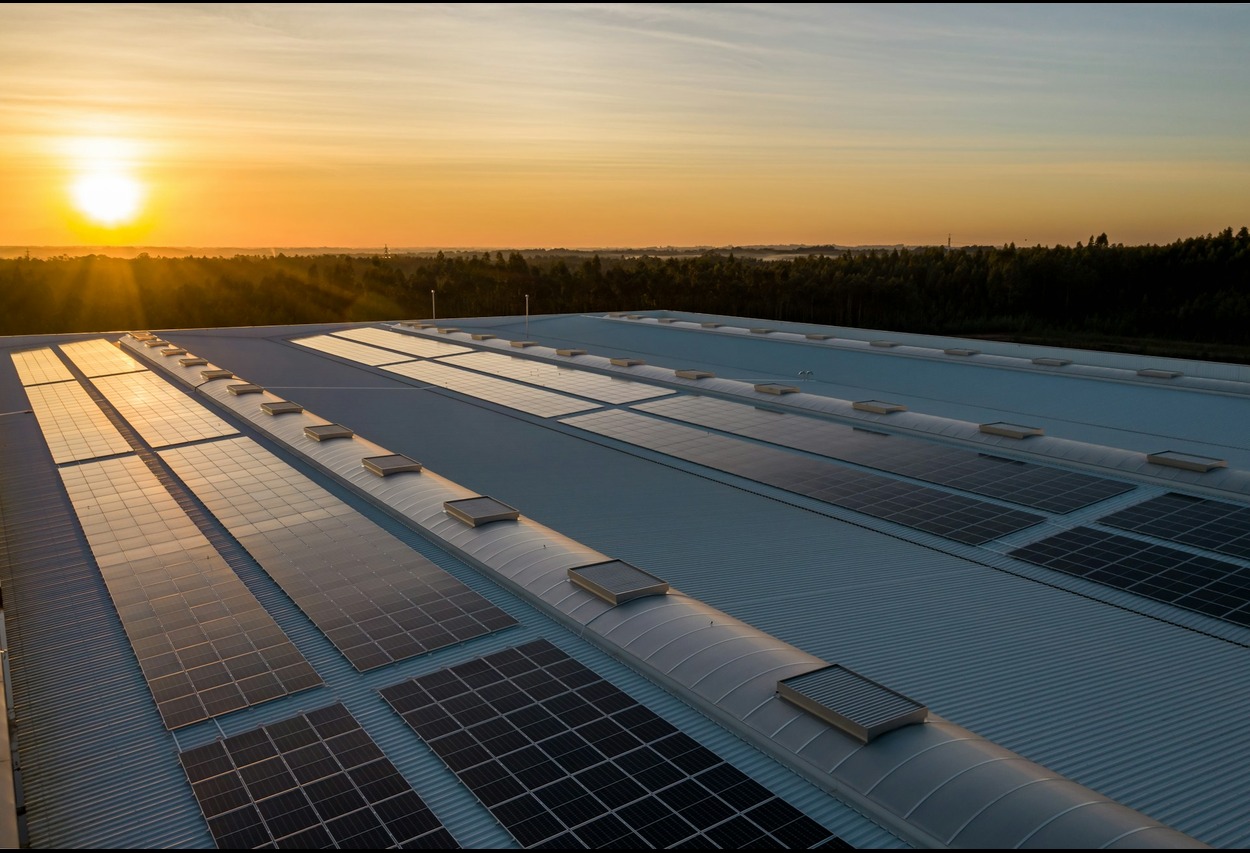Welcome to the world of HMS Photovoltaik, where innovative technology and sustainable energy solutions come together. In an era where renewable energy is becoming increasingly important, HMS Photovoltaik is at the forefront of advancements in solar energy. Committed to the efficient and effective use of solar energy, this cutting-edge system is revolutionizing the way we think about energy consumption. Whether you’re a seasoned environmentalist or simply curious about greener alternatives, get ready to discover everything you need to know about HMS Photovoltaik and its transformative potential for our lives!
History of Solar Energy and Photovoltaic Technology
Solar energy has a rich history dating back centuries. Ancient civilizations harnessed sunlight for a variety of purposes, but the modern era of solar energy began in the 19th century with the discovery of the photovoltaic effect by Edmond Becquerel in 1839. This revolutionary discovery laid the foundation for solar technology.
Fast forward to the 1950s, when researchers developed the first functional silicon solar cells. These innovations paved the way for their widespread adoption and commercial use, eventually leading to significant advances in efficiency and affordability. Today, solar energy is an integral part of our renewable energy landscape.
You may also be interested in: Your Topics Multiple Stories
How does HMS Photovoltaik work?
HMS Photovoltaik harnesses solar energy by converting sunlight into electricity using photovoltaic cells. These cells contain semiconductors, usually silicon, that absorb photons from the sun and create an electric current. This process is known as the photovoltaic effect.
The electricity produced can be used immediately to power devices or stored in batteries for later use. The system is designed to be efficient, optimizing energy capture even in variable light conditions. Thanks to its cutting-edge technology, HMS Photovoltaik ensures reliable and sustainable energy production while reducing dependence on fossil fuels.
Advantages and Benefits of HMS Photovoltaik
HMS Photovoltaik offers numerous benefits, both for the environment and your wallet. By harnessing solar energy, you can significantly reduce your electricity costs and minimize your dependence on fossil fuels. This transition promotes sustainable development and reduces your carbon footprint.
Furthermore, HMS Photovoltaik systems strengthen energy independence by allowing users to generate their own electricity. Thanks to the increasing efficiency of solar technology, these systems offer reliable and scalable energy solutions that adapt to diverse needs. Adopting this innovative approach means actively contributing to a cleaner future while saving money in the long run.
Specific Applications of HMS Photovoltaik
HMS Photovoltaik technology has found numerous practical applications in various sectors. For example, it is increasingly used on ships, providing clean energy for propulsion and onboard systems. This reduces dependence on fossil fuels and improves operational efficiency.
In addition to maritime applications, HMS Photovoltaik powers remote installations such as lighthouses and weather stations. These sites benefit from independence from solar power, ensuring continuous operation even in remote areas. With increasing awareness, more and more sectors are likely to adopt this innovative solution to meet sustainable energy needs.
Future Developments and Growth Potential
The future of HMS Photovoltaik holds immense potential. Innovations in solar technology promise greater efficiency and reduced costs. Thanks to advancements such as bifacial panels and energy storage systems, installations will be better adapted to diverse environments.
With global awareness of climate change, the demand for sustainable energy solutions is increasing. This trend opens up opportunities for HMS Photovoltaik to expand into new markets. Partnerships with sectors such as shipping and maritime can drive innovation, making solar energy an even more viable option for a cleaner, greener future.
Advantages of HMS Photovoltaik
HMS Photovoltaik offers numerous advantages that make it an attractive option for energy solutions. It efficiently harnesses solar energy, significantly reducing dependence on fossil fuels. This translates into lower greenhouse gas emissions and contributes to a cleaner environment.
Furthermore, HMS Photovoltaik systems offer substantial savings on long-term energy bills. Their durability and low maintenance ensure long-term performance with minimal costs. This combination of efficiency and sustainability makes HMS Photovoltaik an attractive option for individuals and businesses looking to invest in renewable energy.
Types of Solar Panels for HMS Photovoltaik
For HMS Photovoltaik, the choice of solar panels is crucial. The most common types are monocrystalline, polycrystalline, and thin-film. Monocrystalline panels offer high efficiency and longevity, but are generally more expensive. They are ideal for small spaces. Polycrystalline panels are more affordable and slightly less efficient, but ideal for larger installations. Thin-film technology offers flexibility and lightness, making them ideal for specific applications such as boats or curved surfaces. Each type offers specific advantages depending on the needs and conditions.
Factors to Consider Before Installing a HMS PV System
When considering installing a HMS PV system, it is critical to assess your energy needs. Evaluating your current consumption and forecasting your future needs can help you determine the right size for your solar system.
Location also plays a crucial role. Consider factors such as sunlight, shading from surrounding structures, and local climate conditions. These elements have a significant impact on energy efficiency and overall performance. Additionally, understanding local regulations and potential incentives can simplify the installation process and maximize financial benefits.
The HMS PV System Installation Process
Installing a HMS PV system begins with a site assessment. Experts evaluate the site to determine the optimal placement of the panels, ensuring maximum sun exposure. This phase includes verifying structural integrity and electrical requirements.
Once planning is complete, installation begins. The panels are securely mounted, connected to an inverter for power conversion, and integrated into existing electrical systems. Technicians then perform extensive testing to ensure efficiency and operation before finalizing the connections. This meticulous approach ensures your solar solution operates at peak efficiency from day one.
Maintenance and Troubleshooting Tips for HMS Photovoltaik
To ensure optimal performance of your HMS Photovoltaik system, regular maintenance is essential. Start by regularly inspecting the solar panels for dirt or debris. Cleaning them ensures optimal sunlight absorption and efficiency. Regularly check connections and wiring for signs of wear.
A decrease in energy production may indicate a problem. Use monitoring software to easily monitor performance indicators. A sudden change may indicate shading issues or equipment malfunction, which requires professional troubleshooting to restore optimal operation immediately.
Analysis of Costs and Savings Associated with Using HMS Photovoltaic Systems
The cost of implementing HMS photovoltaic systems can vary considerably depending on the size and type of installation. Initial expenses include equipment, labor, and potential site improvements. However, government incentives often offset these costs, making solar energy more accessible.
Over time, the savings on electricity bills can be substantial. By reducing dependence on traditional energy sources, many users see a significant reduction in their monthly expenses. Furthermore, the longevity and low maintenance of photovoltaic systems contribute to long-term financial benefits for both businesses and individuals.
Challenges and Limitations of Clean Energy
Clean energy, while promising, faces several challenges. The high upfront costs of technologies like HMS photovoltaics can deter investors. Furthermore, significant infrastructure is required to drive widespread adoption.
Intermittency is another issue: solar energy production fluctuates depending on weather conditions and the time of day. This variability can complicate grid management and energy storage solutions. Furthermore, the sourcing of solar panel materials poses environmental issues that must be addressed to ensure sustainable practices. These factors underscore the complexity of a complete transition to clean energy sources such as HMS PV.
The Role of Government Policies and Incentives
Government policies play a crucial role in promoting HMS PV. Incentives such as tax credits, grants, and rebates encourage individuals and businesses to adopt solar technology. These financial benefits can significantly reduce the initial investment costs associated with solar systems.
Furthermore, regulations favoring renewable energy create a favorable environment for innovation and growth in the sector. Policymakers increasingly recognize the importance of clean energy solutions as part of climate action plans. This favorable framework encourages advancements in PV technologies, making them more accessible to all.
You may also be interested in: Trucofax
Underlying Technology
This system incorporates cutting-edge technology to efficiently harness solar energy. It uses advanced photovoltaic cells that convert sunlight into electricity. These cells are designed for optimal performance in various environmental conditions.
The system also incorporates smart monitoring solutions. These allow users to monitor energy production and consumption in real time. Through data analysis, it optimizes production and ensures maximum efficiency throughout the day, making it a reliable option for sustainable energy management.
Benefits of Photovoltaic Vessels
Photovoltaic technology is all the rage in the maritime sector. Vessels equipped with solar panels harness sunlight to generate energy, thus reducing dependence on fossil fuels. This development not only reduces operating costs but also minimizes environmental impact.
The use of HMS Photovoltaic on vessels improves energy efficiency and contributes to cleaner oceans. Thanks to constant advancements, these vessels can operate more sustainably while maintaining their performance. As the world moves toward renewable solutions, the adoption of photovoltaic systems onboard vessels represents an important step toward greener modes of maritime transport.
The adoption of this innovation opens up new vistas for maritime transport and lays the groundwork for future developments that prioritize sustainability without compromising efficiency or reliability.

